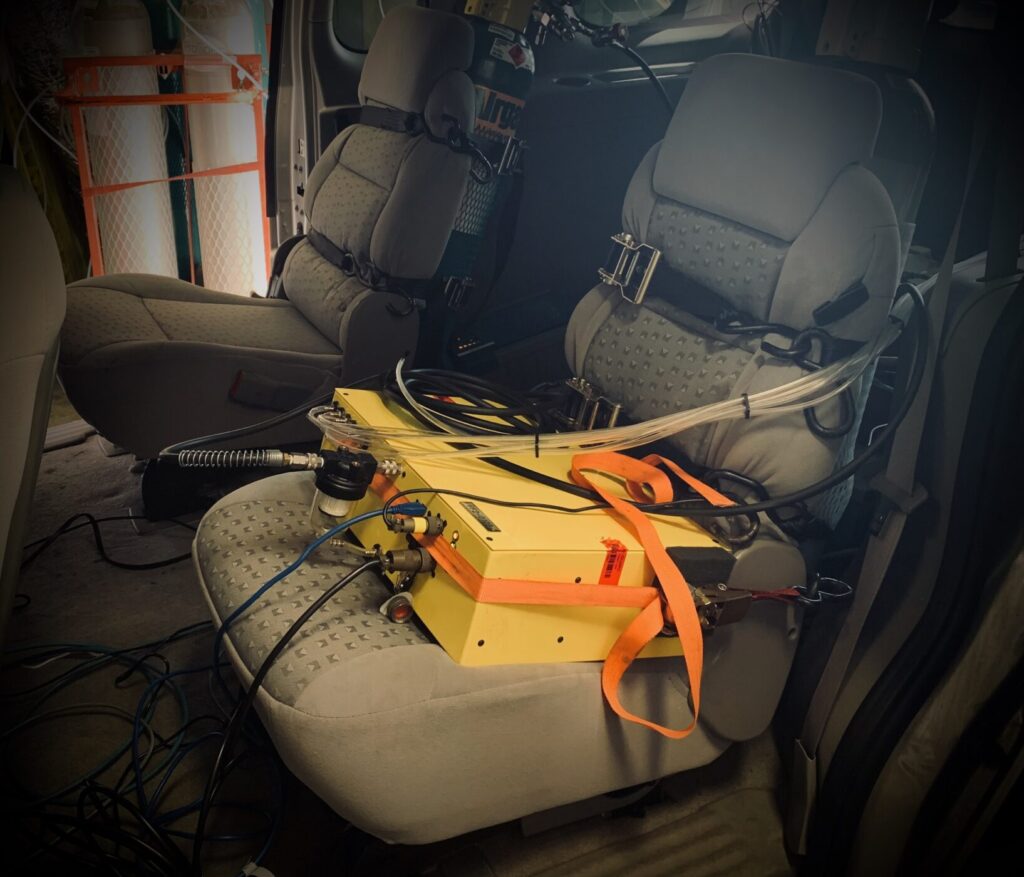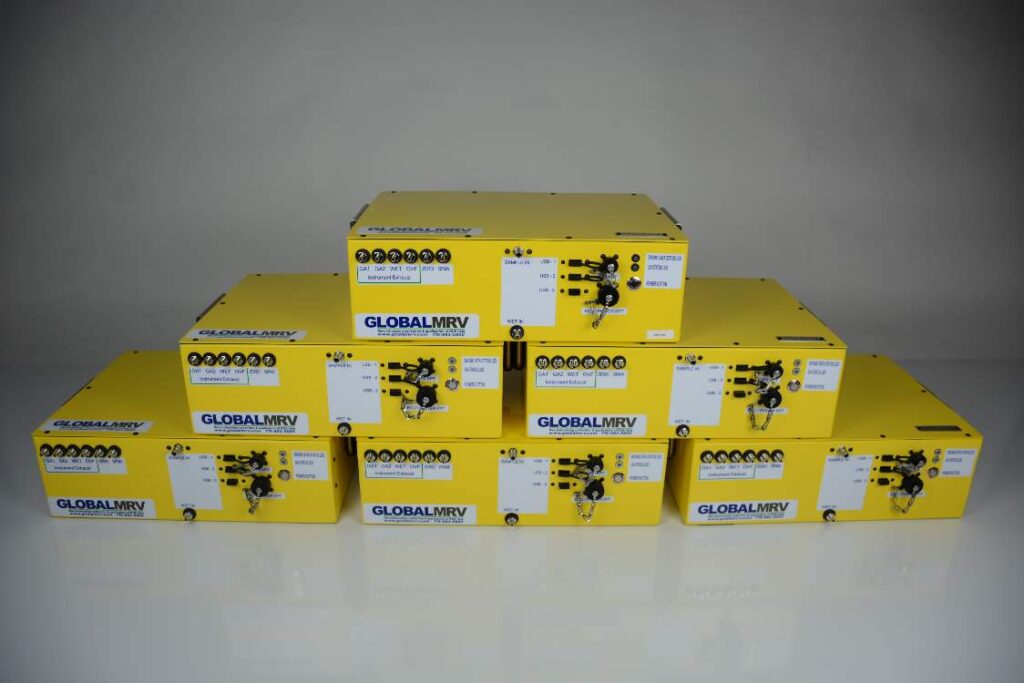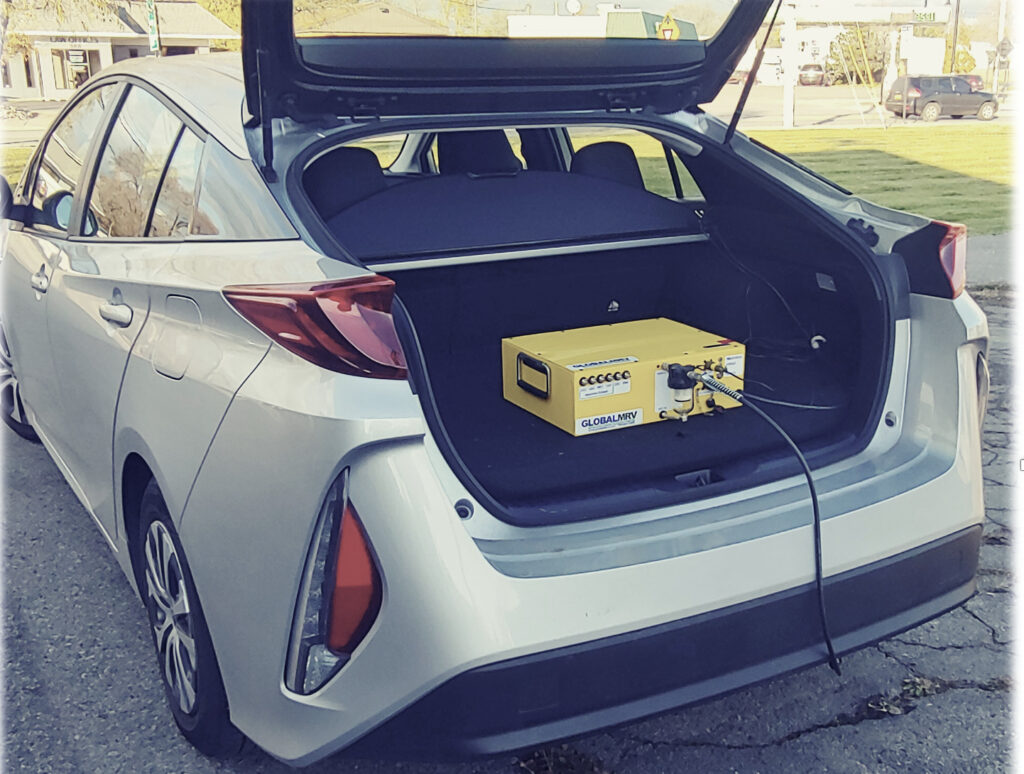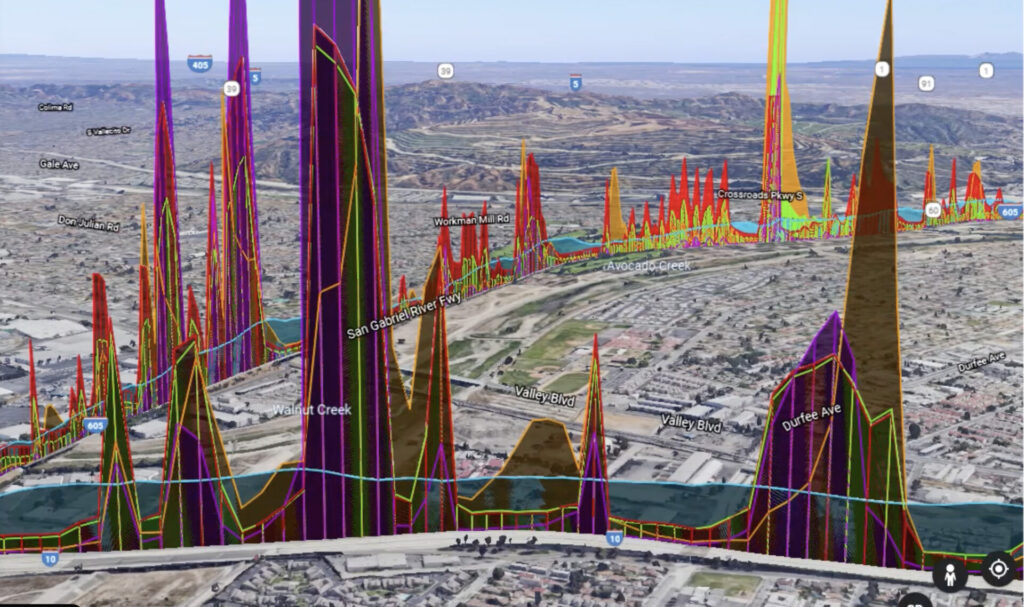
The battle against climate change requires innovative solutions to curb greenhouse gas emissions and reduce our carbon footprint. One such solution is the use of Global Monitoring, Reporting, and Verification’s (GlobalMRV) Portable Emissions Measurement Systems (PEMS) via a Hardware as a Service (HaaS) model.
The powerful combination of PEMS in a HaaS model is revolutionizing the way we monitor emissions and is catalyzing environmental improvements across the globe. In this article, we’ll explore the concept of PEMS and how integrating HaaS can elevate PEMS’ impact on the world.
Understanding Portable Emissions Measurement Systems (PEMS)

GlobalMRV’s Portable Emissions Measurement Systems (PEMS) help companies, research and development firms, businesses, and environmental groups monitor, report, and verify vehicles and emissions via data capture and analysis solutions.
These systems are designed to provide real-time, precise data on vehicles and emissions by analyzing data from various sources, including industrial processes, power plant operations, and transportation initiatives. PEMS helps accumulate and analyze volumes of reliable, quality emissions data on internal combustion engines (ICE), hybrid engines, vehicles, and equipment. Most importantly, customers need the data acquisition process to be accurate, robust, thorough, and efficient for cost and time considerations.
Best of all, PEMS plays a pivotal role in addressing and curbing the harmful effects of climate change. By providing accurate, robust, thorough, and efficient data acquisition technology, companies gain a more comprehensive understanding of emissions in real-world scenarios, and ultimately, can better curb the spread of harmful greenhouse gas emissions through ICE improvement.
What is Hardware as a Service (HaaS)?

Hardware as a Service (HaaS) is a subscription-based model for hardware resources. Users can save time and money by accessing and utilizing hardware components on-demand — rather than owning and maintaining them outright.
HaaS allows organizations to access and utilize state-of-the-art hardware without the need for a large upfront investment. making HaaS the logical, cost-effective, and flexible solution for industries looking to monitor their overall climate footprint.
How Your PEMS Can Benefit from HaaS

PEMS and HaaS work together well: they work in synergy with each other to offer numerous advantages for both emissions monitoring and environmental improvement. They’re beneficial for the following:
- Cost-Efficiency: HaaS eliminates the need for organizations to purchase and maintain their monitoring hardware, thereby reducing capital expenditure and overhead costs. PEMS also allows users additional options for their emissions monitoring needs.
- Accessibility: With HaaS, users can access the latest monitoring hardware. Plus, companies keep PEMS up to date with the latest hardware upgrades and improved accuracy with the HaaS model. HaaS ensures that emissions data collected by PEMS is always of the highest quality.
- Scalability and Flexibility: HaaS allows companies to capture and monitor emissions data on a larger scale as needed. However, PEMS can be leased on a per-project basis and can be used at a variety of different locations and work sites. Having flexibility in the location and timing of data capture and analysis is particularly useful for monitoring emissions across entire industries and regions.
- Reduced Maintenance: Hardware maintenance and calibration are often taken care of by the HaaS provider, thereby reducing the burden on users of ensuring that monitoring equipment produces accurate data measurements, verifications, and reports.
- Integration: HaaS solutions can be integrated seamlessly into existing systems and processes, streamlining data collection and minimizing reporting discrepancies. In just 15-20 minutes, PEMS systems can be installed, and test results are immediate. For this reason, PEMS with HaaS are more accessible and user-friendly.
How PEMS Can Be Used with HaaS

The combination of PEMS in a HaaS model affords a considerable number of conveniences and benefits to users for their data capture needs, including:
- Better Compliance with Environmental Regulations: HaaS-enabled PEMS helps industries and organizations adhere to stringent environmental regulations by providing accurate real-time data, ensuring compliance, and avoiding costly penalties.
- Reduced Carbon Footprint: HaaS-equipped PEMS are instrumental in helping organizations track and reduce their carbon footprint during engine development. Reduced carbon footprint ultimately supports sustainability initiatives and climate action goals.
- Streamlined Transportation Emission Monitoring: In the transportation sector, HaaS-enabled PEMS can help companies monitor emissions from vehicles, helping organizations assess and improve the environmental impact of their fleets.
- Improved Air Quality Monitoring: In urban areas, HaaS-integrated PEMS contributes to improved air quality by helping stakeholders better identify pollution sources and guide policy decisions.
The Challenges of PEMS with HaaS

Despite numerous benefits, a handful of challenges exist when implementing PEMS with HaaS (that is, if not adequately addressed by the PEMS provider):
- Data Privacy: The collection of emission data using HaaS can raise privacy concerns. At GlobalMRV, we make sure your data is always collected and stored securely 100% of the time.
- Standardization: To ensure the comparability and transferability of emissions data across different sectors, groups, and stakeholders, companies must uphold standardized measurement protocols for PEMS. At GlobalMRV, we take measurement protocol seriously, which is why we hold ourselves to higher standards for providing reliable, accurate, and consistent measurements with our PEMS.
The Future of PEMS with HaaS

In the future, the integration of PEMS with HaaS is expected to expand, evolve, and provide the following benefits to users across the board:
- Enhanced Accuracy: PEMS providers like GlobalMRV continue to develop and upgrade hardware. As new technology arrives, PEMS providers will be at the forefront of innovation and will become poised to provide even more accurate, detailed emissions monitoring solutions for all stakeholders.
- Broader Adoption: The cost-effectiveness and flexibility of HaaS will encourage more industries and organizations to adopt PEMS, paving the way for a wider adoption of effective data monitoring solutions that can make a profound global impact on emissions reduction initiatives.
GlobalMRV: Revolutionizing How the World Does Emissions Monitoring

When combined with Hardware as a Service (HaaS), Portable Emissions Measurement Systems (PEMS) are reshaping the way organizations monitor and report emissions. Our society is already beginning to see the results of better data capture and emissions monitoring solutions, namely, a cleaner and more sustainable world.
The powerful marriage of PEMS with HaaS can help reduce costs, enhance accessibility, and streamline the emissions monitoring and data capture process. As industries, governments, and organizations increasingly adopt these solutions, we can expect the world to come to a more comprehensive understanding of the impact that emissions leave on our planet, as well as make a more concerted global effort to combat climate change.
PEMS with HaaS are not just tools; they’re catalysts for environmental improvement — and they’re bringing us all one step closer to a greener and more sustainable world.
At GlobalMRV, we’ve collected and analyzed tens of thousands of hours of reliable data for clients of all different industries and niches. Our partnerships of Ph.D. researchers, managers, analysts, engineers, and technicians have run more than 60 different types of diagnostic testing regimes, supported over 100 different vehicles and engines, and saved companies millions on traditional dynamometer and real driving emissions (RDE) testing. To get started with PEMS and HaaS, contact us today.
Leave a Reply